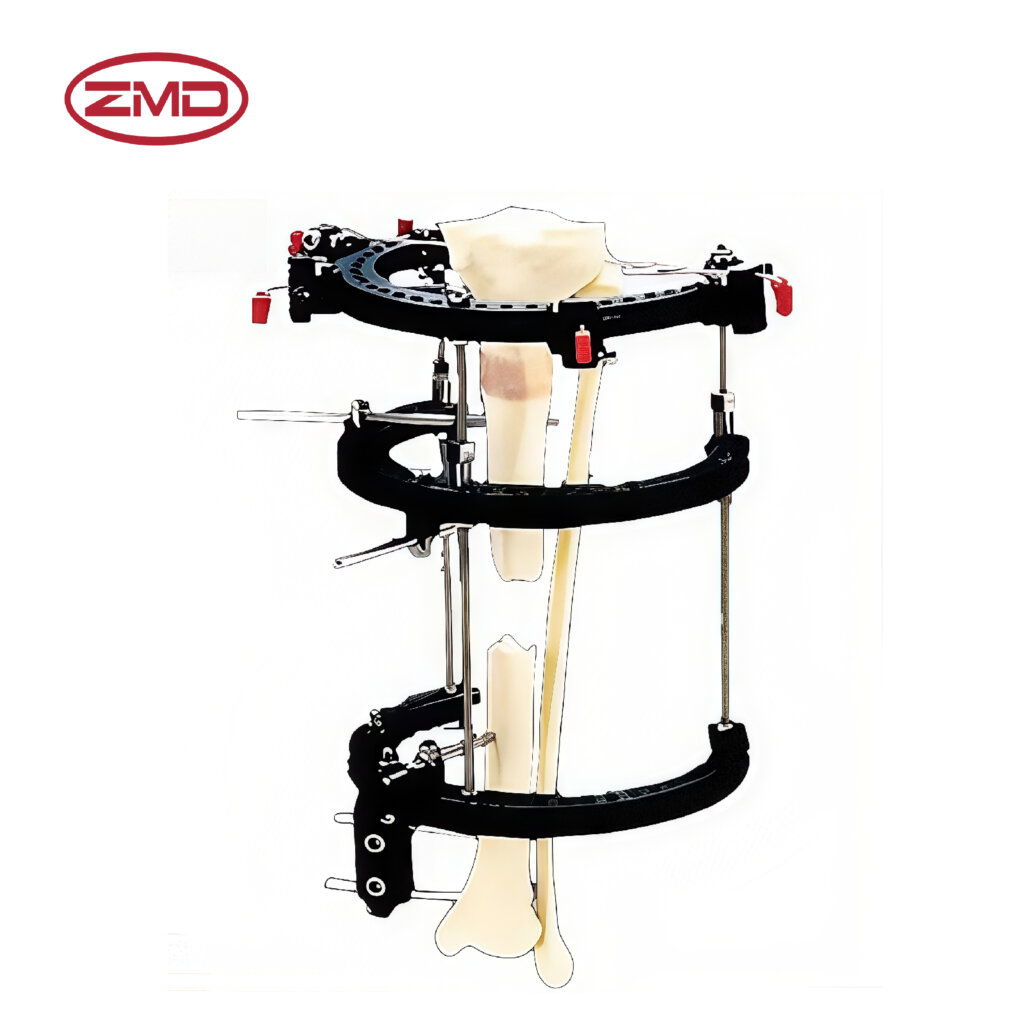
- Home
- About Us
- Products
- Trauma Internal Fixation System
- Spinal Internal Fixation System
- External Fixation
- Artificial Implants System
- Sports Medicine
- Power tools
- VSD System
- Instruments
- Medical supplies
- Blog
- Personnel Profile
- Contact Us
Phone line
| CODE | PRODUCTION | DESCRIPTION | MATERIAL |
| ZK004 | Articulated Minirail Fixator (Horizontal Axis) | Whole set | Aluminum |
The main advantage is that it allows for controlled horizontal movement near joints, which promotes better healing by mimicking natural joint motion to an appropriate extent
It is typically attached using screws or pins that are inserted into the bone. This ensures a secure connection for it to function effectively.
No, it's suitable for specific joint fractures where controlled horizontal movement is beneficial, but not for every joint fracture case.
The amount of horizontal movement it permits can be adjusted by the surgeon, depending on the specific requirements of the patient's condition and the healing progress.
It allows for some natural mobility in the horizontal direction while also providing stability, so it doesn't overly restrict movement during the recovery period.
There may be some initial discomfort when wearing it, but this can be managed through appropriate medical care and pain management strategies.
Yes, adjustments can be made as the healing progresses. Surgeons can modify the fixator's settings to optimize the healing process.
Possible risks include infection, which can occur with any implanted device, and improper placement. However, these can be minimized with proper surgical techniques and post-operative care
The duration it needs to be in place depends on the nature of the injury and the progress of the healing process. The surgeon will monitor and decide when it's appropriate to remove it.
In some cases, it can be used in combination with other orthopedic devices, depending on the complexity of the orthopedic condition and the treatment needs.
Oh yeah! I have to mention their payment options and discount offers, which are awesome! Those payment methods are as flexible as moving water and can be chosen freely according to our cash flow situation. And the frequent discounts, like a timely rain, have been moisturizing our financial statements time and again, and have had a rocket-like positive impact on our profits! With ZMD, I feel relaxed and at ease when it comes to purchasing!
Send us a message if you have any questions or request a quote. Our experts will give you a reply within 24 hours and help you select the right valve you want.
Book Now
If you are looking for professional orthopedic medical product solutions, don’t hesitate to contact us now!

We are an integrated manufacturer specializing in orthopedic medical industry, providing high quality and reliable orthopedic medical products to customers worldwide.
Copyright © 2024 ASK Project